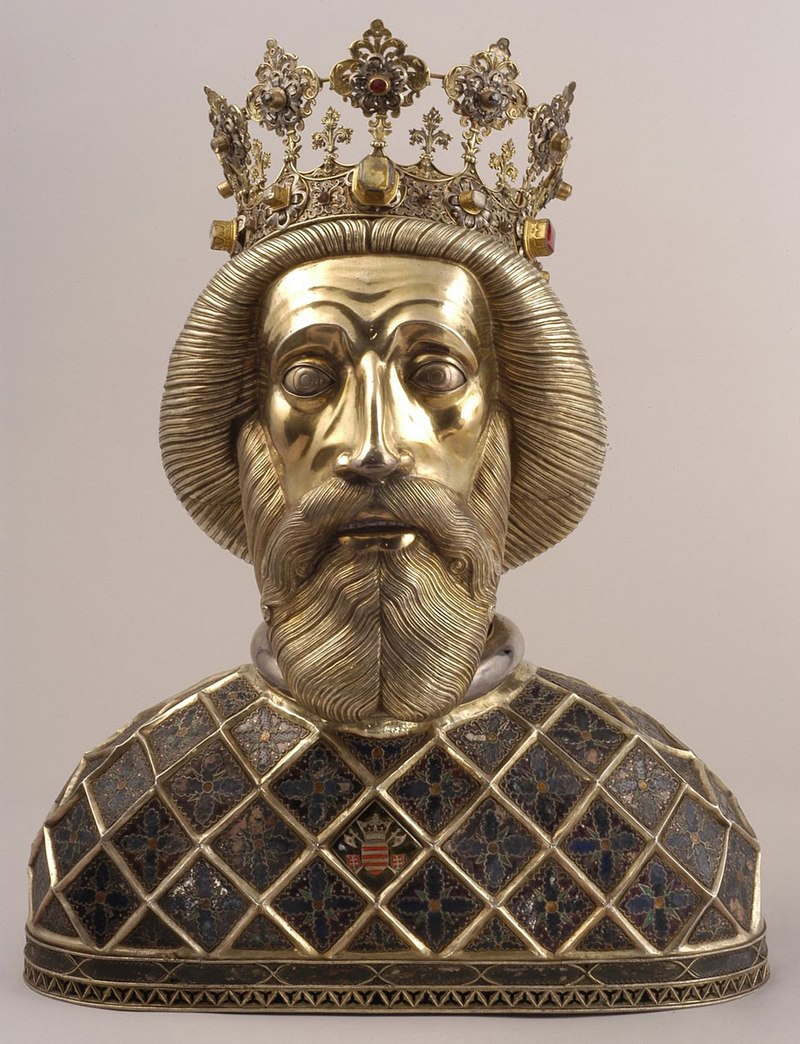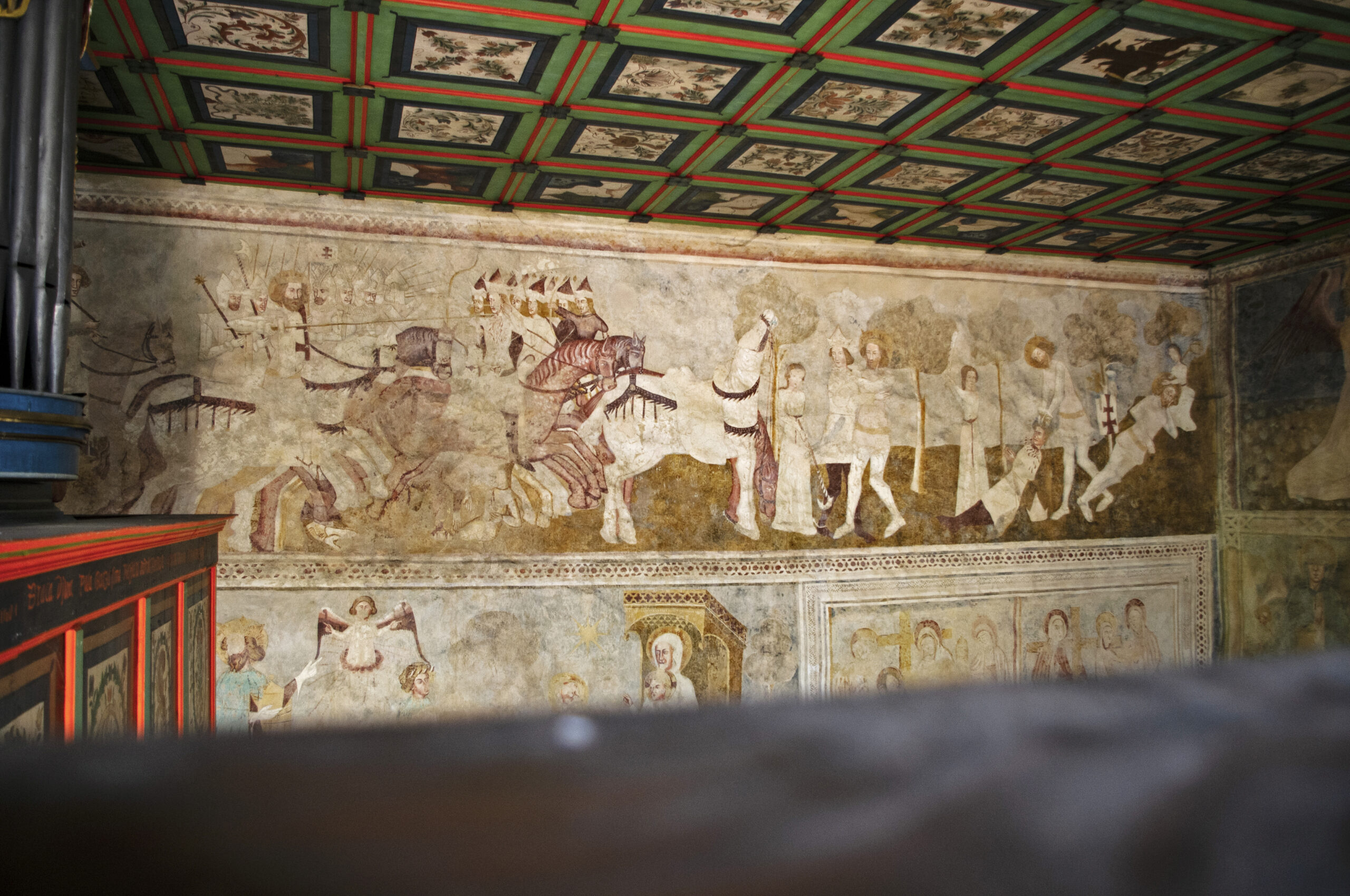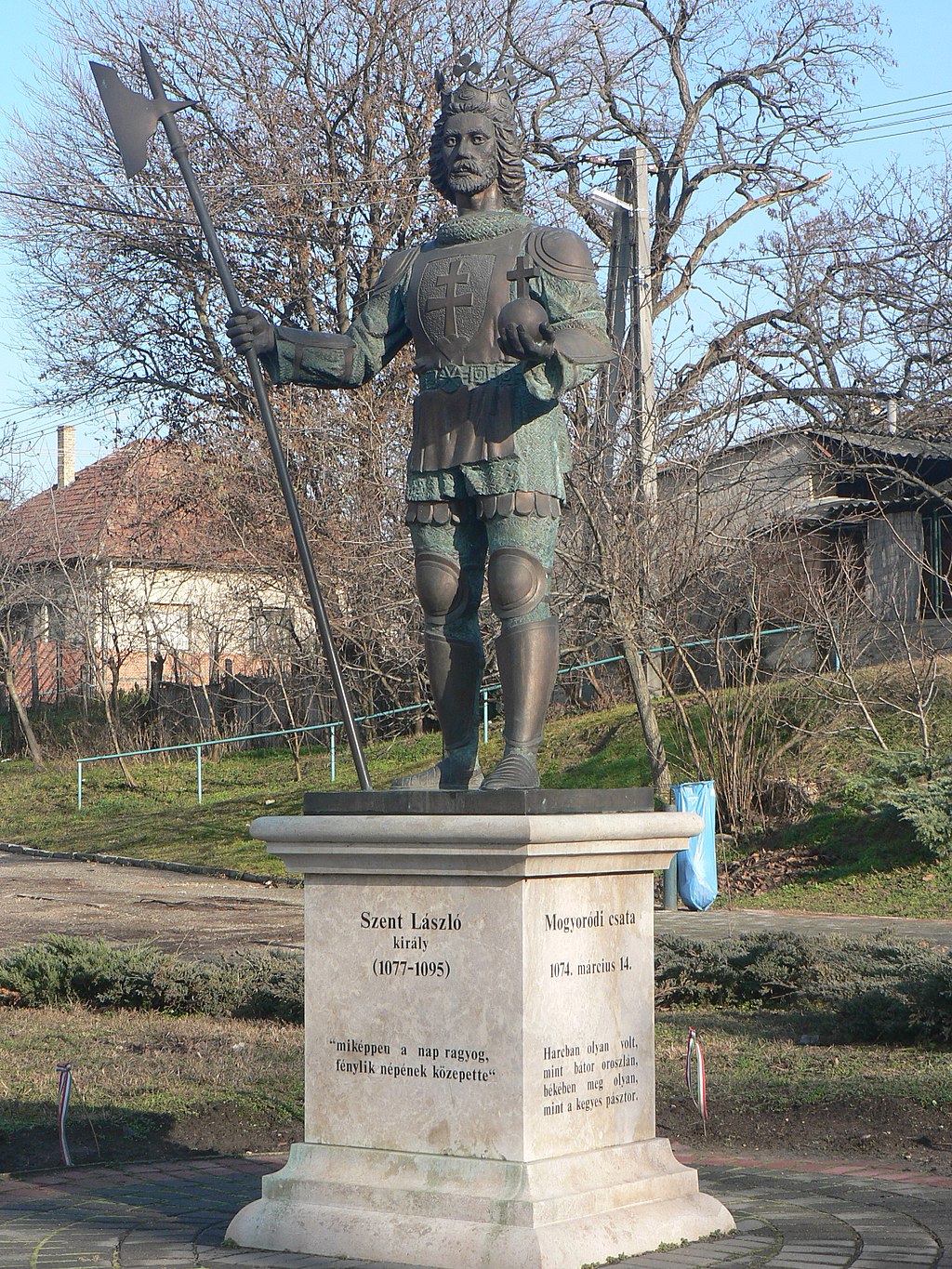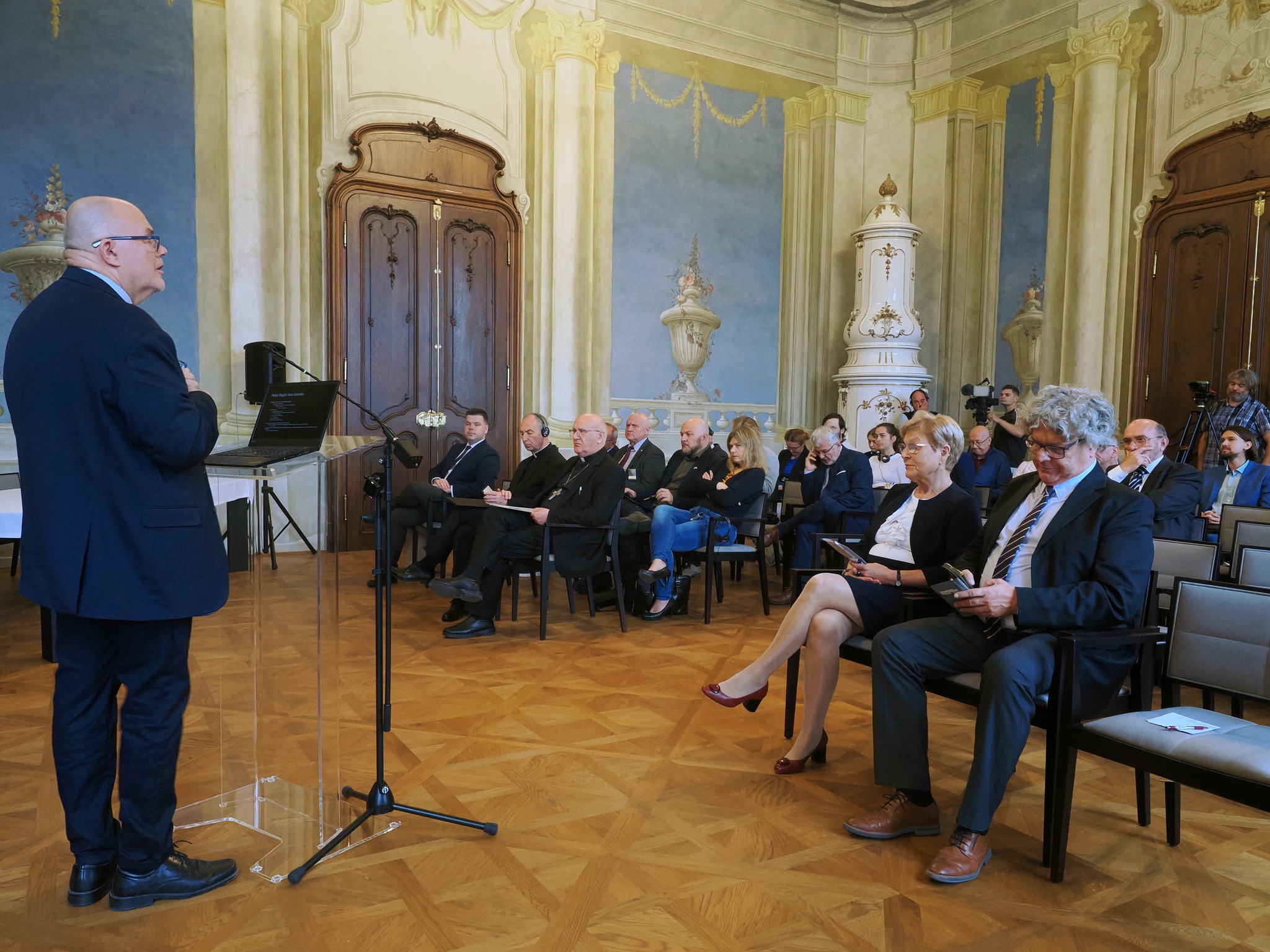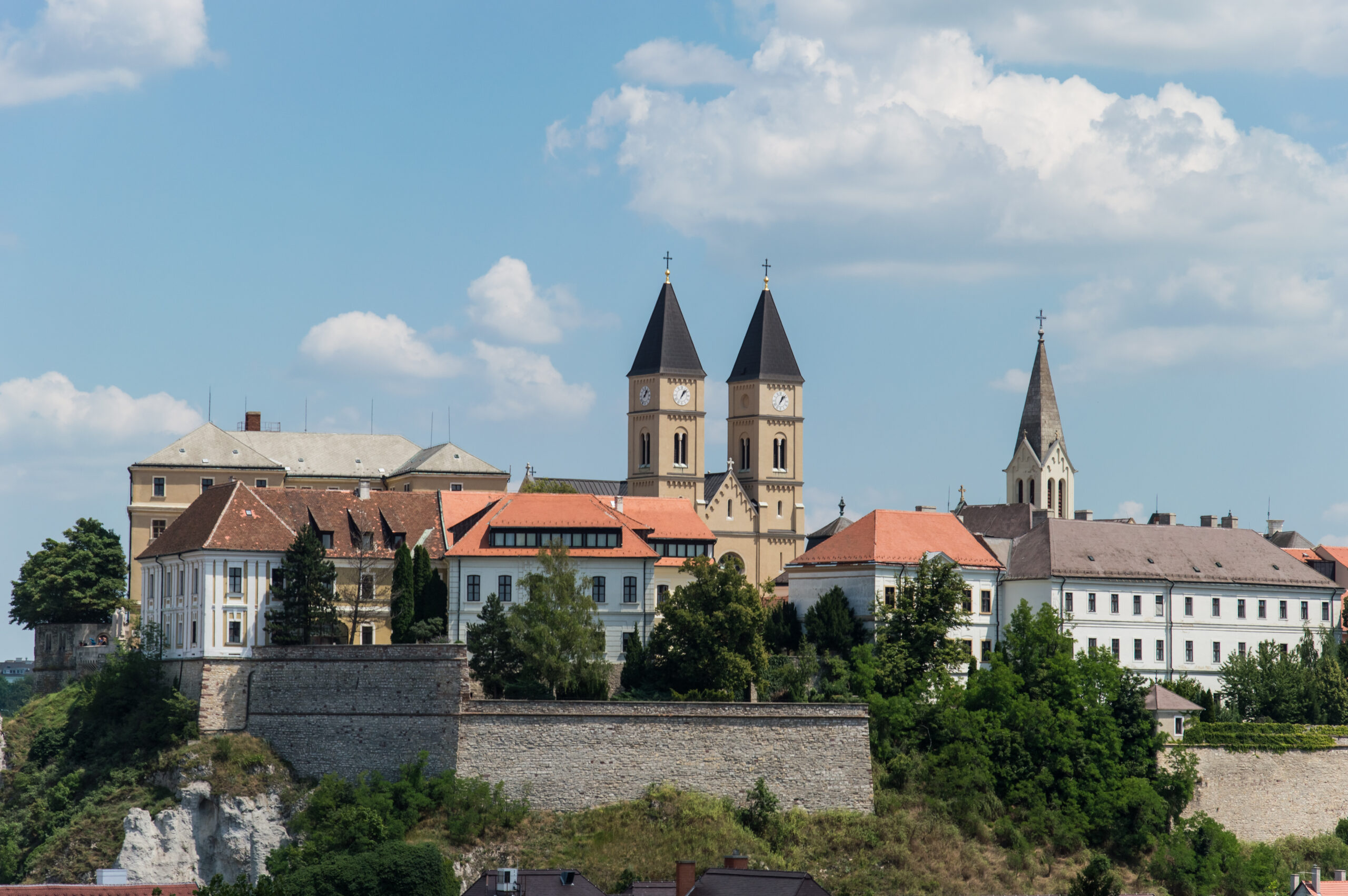Saint Ladislaus – Oradea (Nagyvárad)
Fact of the Hungarian figure „St. Stephen and others – First christian saints in Hungarian Kingdom”
Part of the „The patrons and guardians of the land” topic
Ladislaus I (1077–1095) was a consolidator of the Christian Hungarian kingdom and a military leader who expanded southward. In 1091, he conquered most of Croatia and integrated the territory with the Diocese of Zagreb. His three codes of law and the Council of Szabolcs (1092) established tithes, Sundays, and church primacy, while also providing for the legal status of Jews and Muslims. His pro-papal stance in the Investiture War further increased his international authority.
In 1083, he initiated the canonization of Saint Stephen, Prince Imre, and Bishop Gellért, thus embedding his rule in the holy royal tradition. After his death, his body was moved from Somogyvár to Oradea; the legend of the miraculously self-propelled funeral chariot proclaimed divine approval, and his tomb became a regional pilgrimage site. Since his canonization in 1192, his figure has been a key icon in Hungarian memory politics beyond the border, which is maintained to this day by the Ladislaus celebrations in Oradea and Győr. Thus, Ladislaus is the “warrior-saint” archetype of Hungarian identity, connecting military exploits, law and order, and faith.
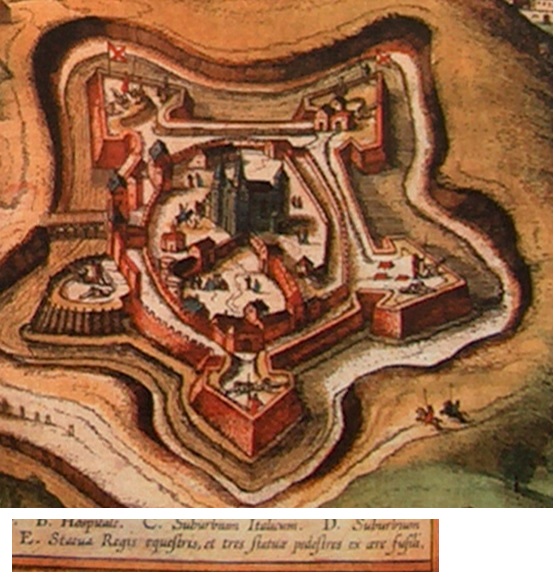
In the scene an equestrian statue, turned toward the church, stands before the cathedral’s west front, while three standing figures flank the building. The legend on the print (see the margin at the bottom) reads: “E. Statua regis equestris et tres statuae pedestris ex aere fusili,” meaning “Equestrian statue of the king and three standing statues, cast in bronze.” The medieval Oradea Fortress was famed for two public bronzes of Saint Ladislaus—a life-size standing figure completed around 1370 and one of Europe’s earliest monumental equestrian statues erected in 1390—both cast by the Martin and George, brothers from Cluj (Kolozsvári Márton és György) on the commission of Bishop Demeter to honour the knight-king who founded the local see.
